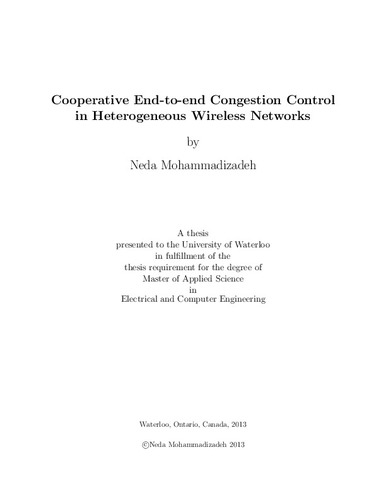| dc.description.abstract | Sharing the resources of multiple wireless networks with overlapped coverage areas has a potential of improving the transmission throughput. However, in the existing frameworks, the improvement cannot be achieved in congestion scenarios because of independent congestion control procedures among the end-to-end paths. Although various network characteristics make the congestion control complex, this variety can be useful in congestion avoidance if the networks cooperate with each other. When congestion happens in an end-to-end path, it is inevitable to have a packet transmission rate less than the minimum requested rate due to congestion window size adjustments.
Cooperation among networks can help to avoid this problem for better service quality. When congestion is predicted for one path, some of the on-going packets can be sent over other paths instead of the congested path. In this way, the traffic can be shifted from a congested network to others, and the overall transmission throughput does not degrade in a congestion scenario. However, cooperation is not always advantageous since the throughput of cooperative transmission in an uncongested scenario can be less than that of non-cooperative transmission due to cooperation costs such as cooperation setup time, additional signalling for cooperation, and out-of-order packet reception. In other words, a trade-off exists between congestion avoidance and cooperation cost. Thus, cooperation should be triggered only when it is beneficial according to congestion level measurements.
In this research, our aim is to develop an efficient cooperative congestion control scheme for a heterogeneous wireless environment. To this end, a cooperative congestion control algorithm is proposed, in which the state of an end-to-end path is provided at the destination terminal by measuring the queuing delay and estimating the congestion level. The decision on when to start/stop cooperation is made based on the network characteristics, instantaneous traffic condition, and the requested quality of service (QoS). Simulation results demonstrate the throughput improvement of the proposed scheme over non-cooperative congestion control. | en |

